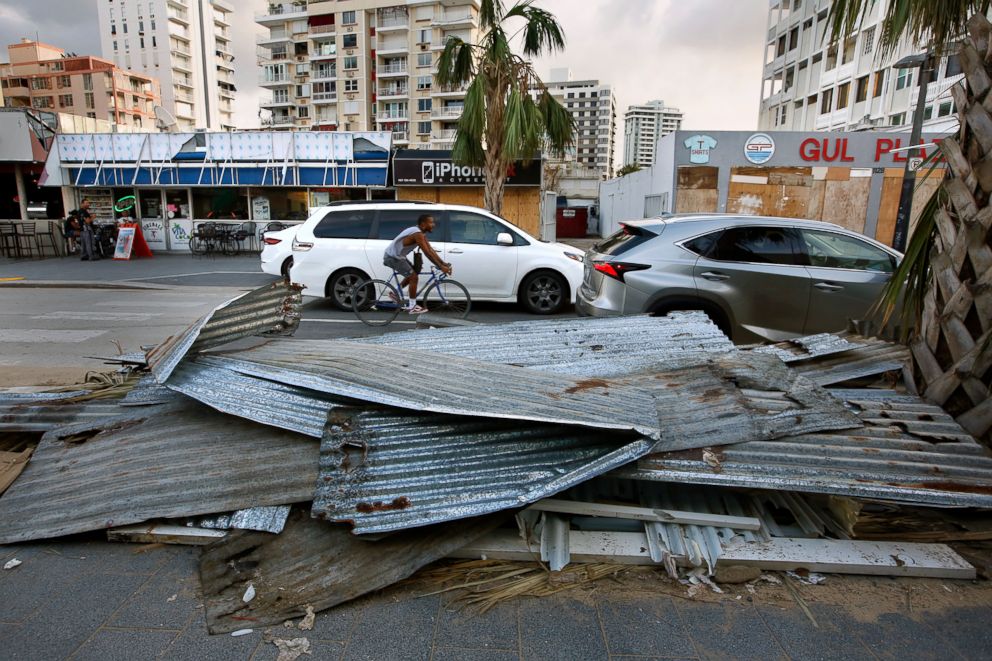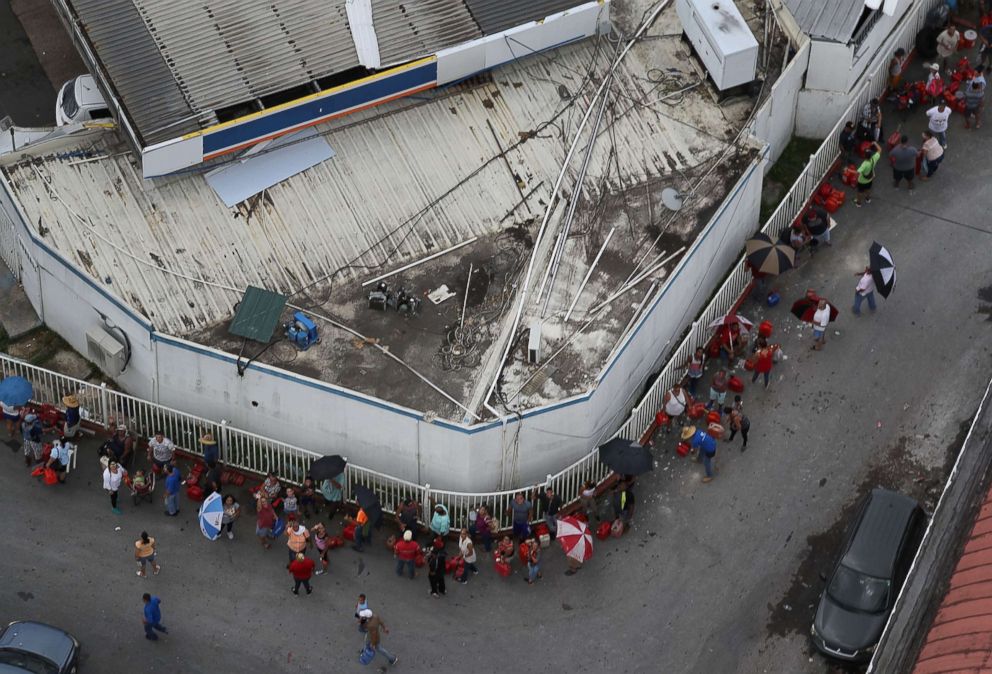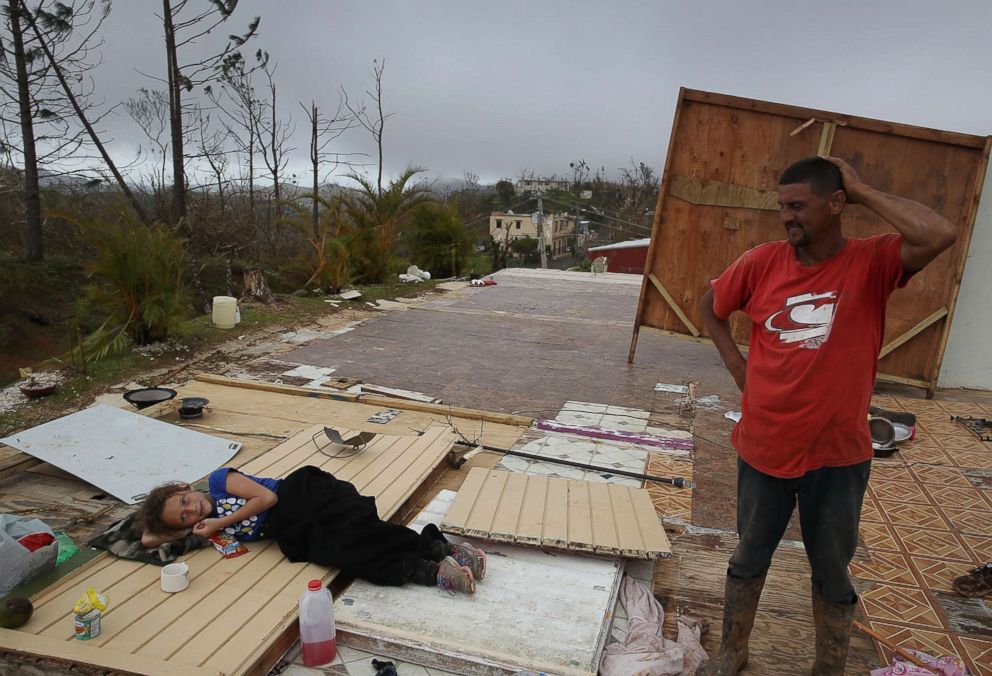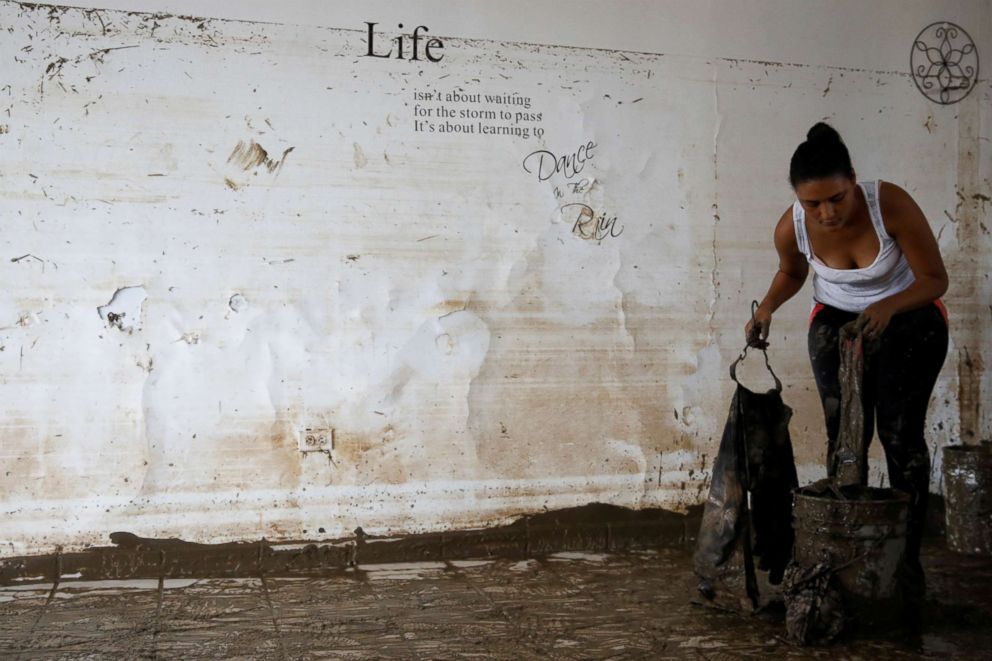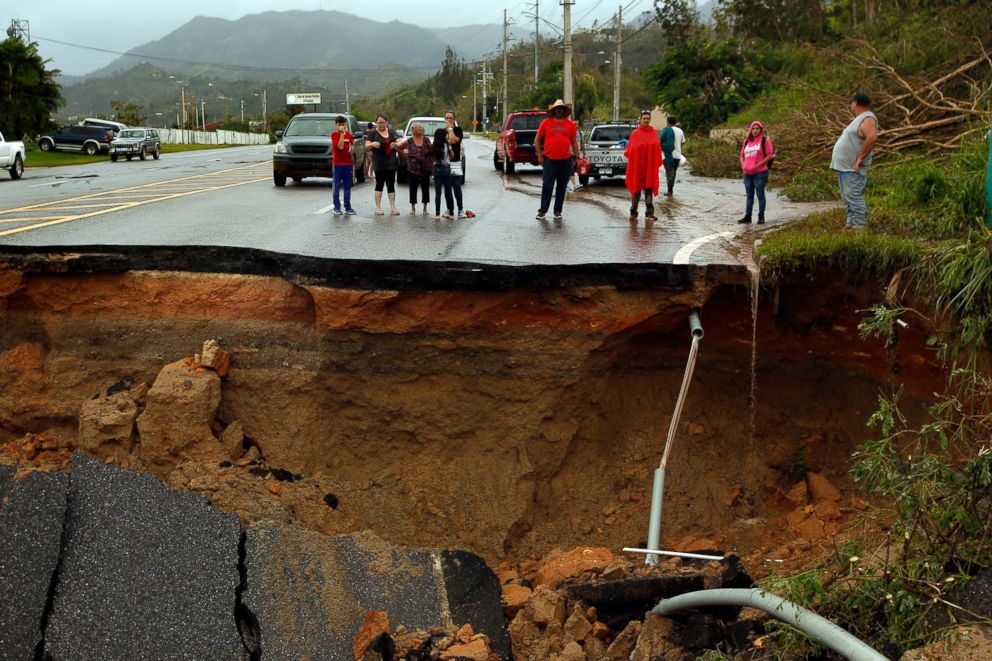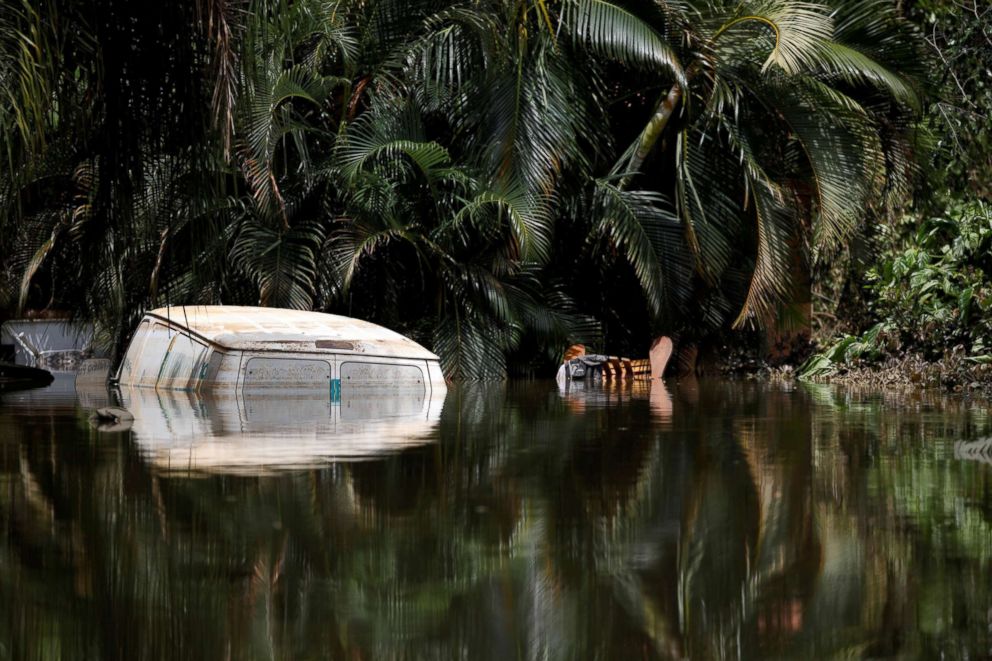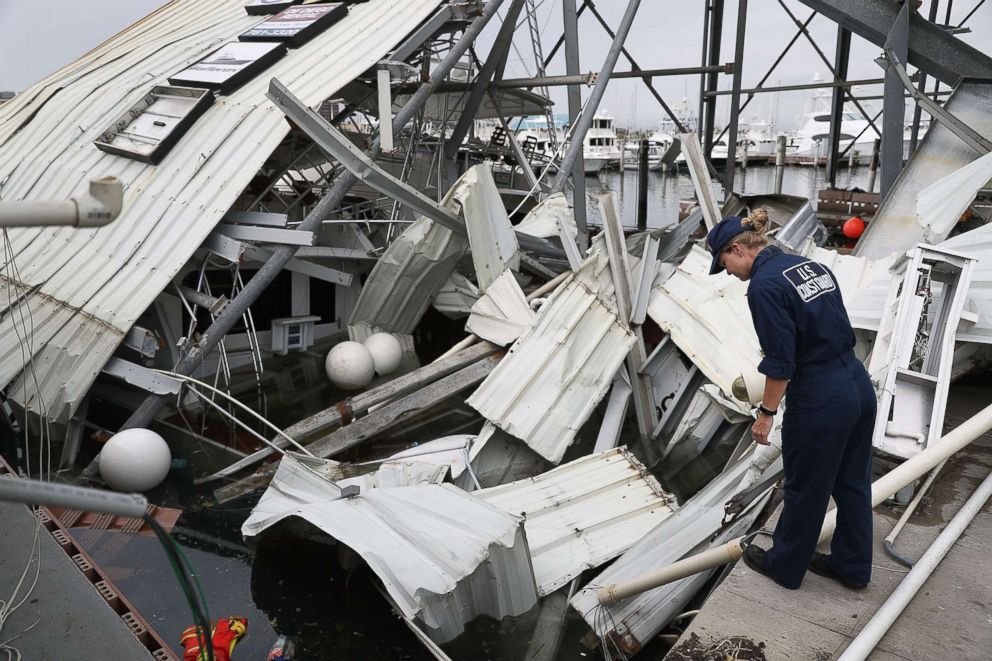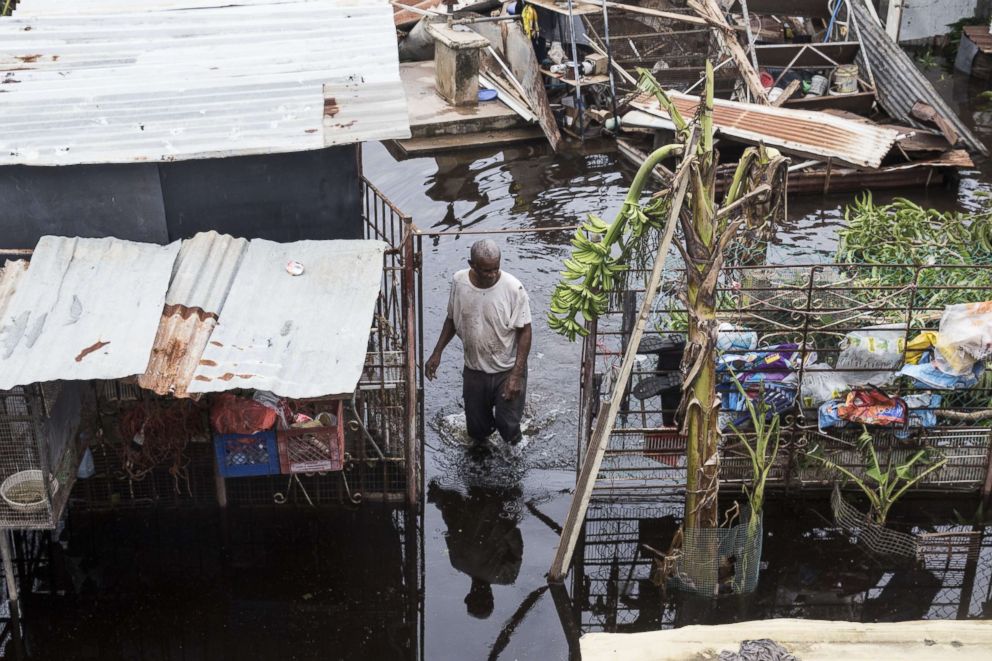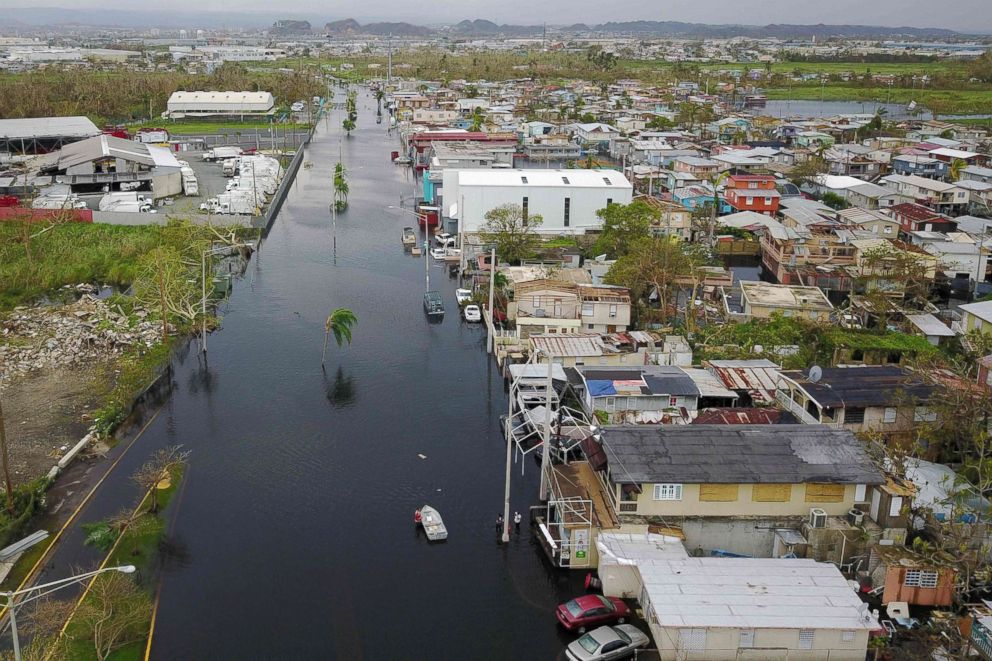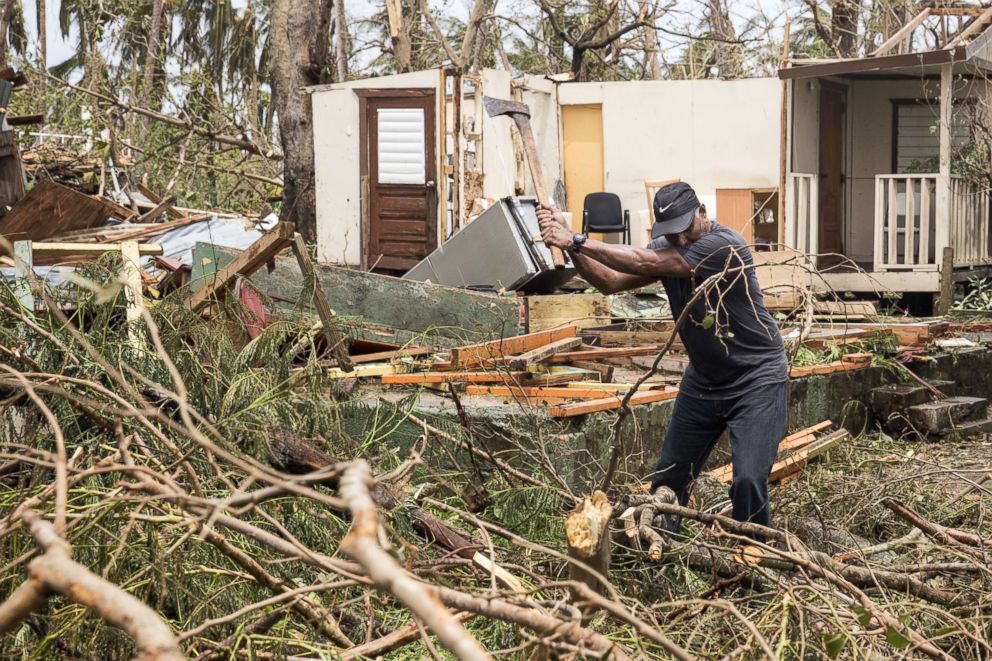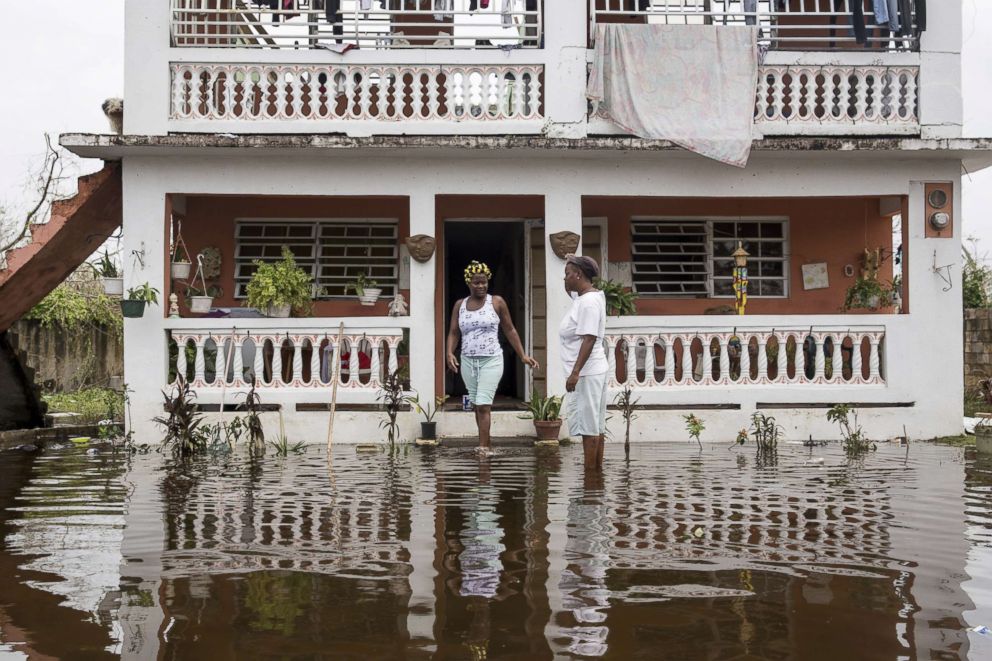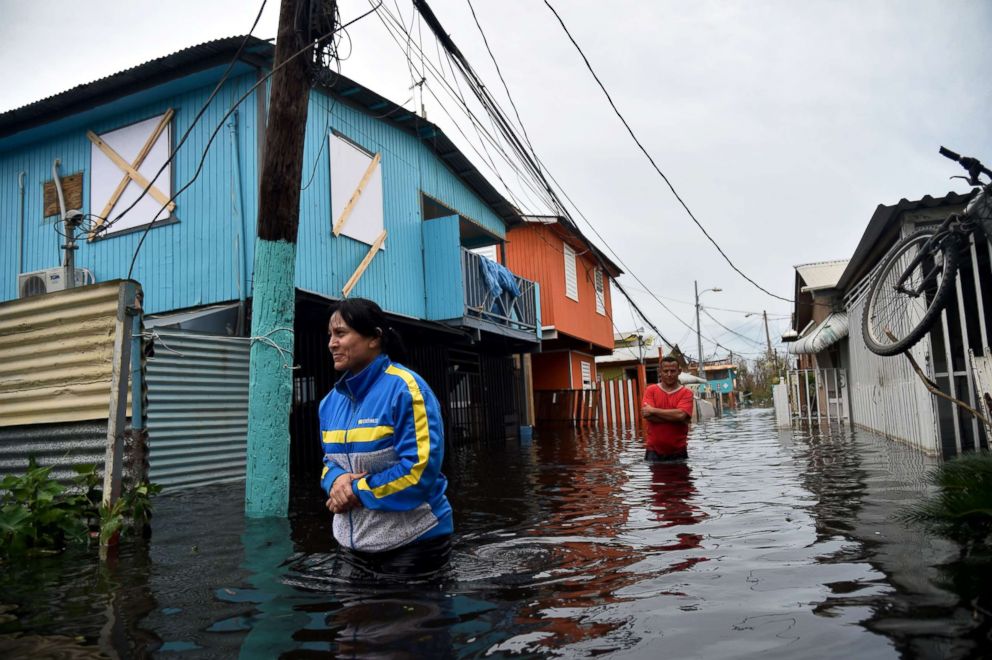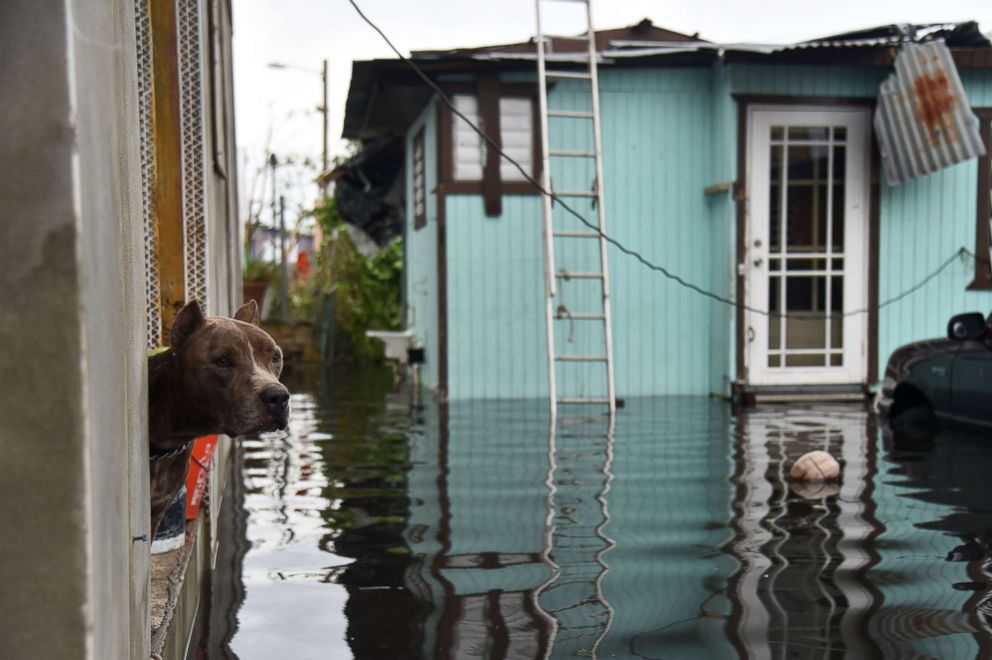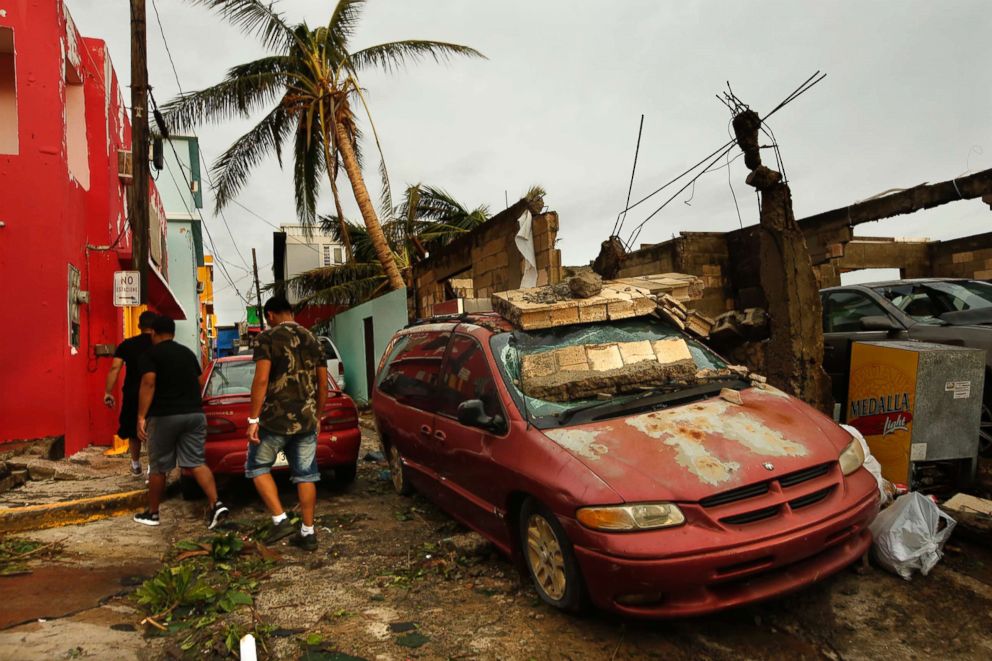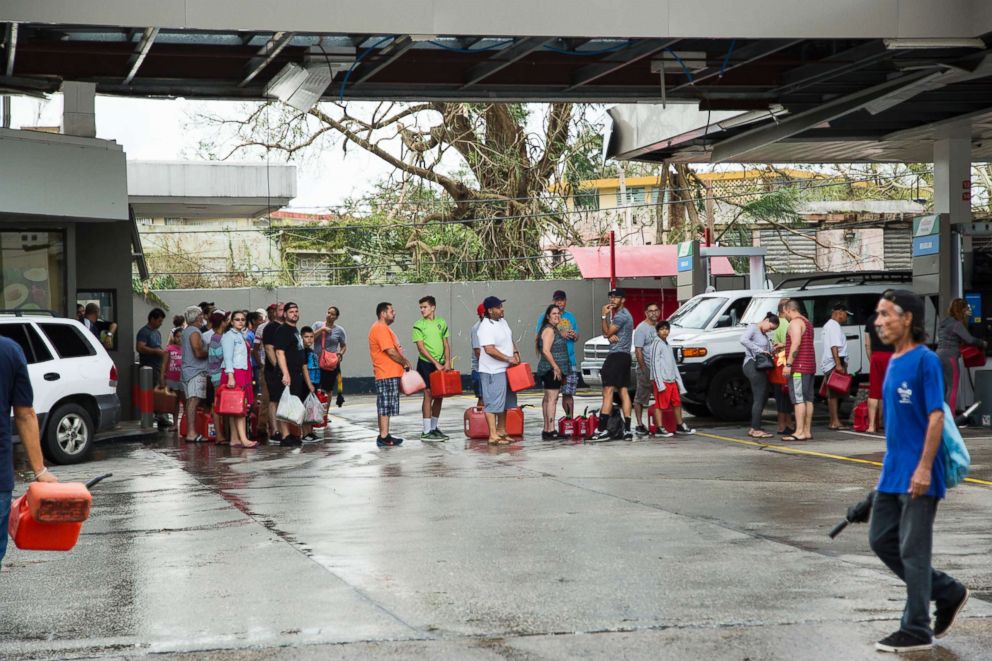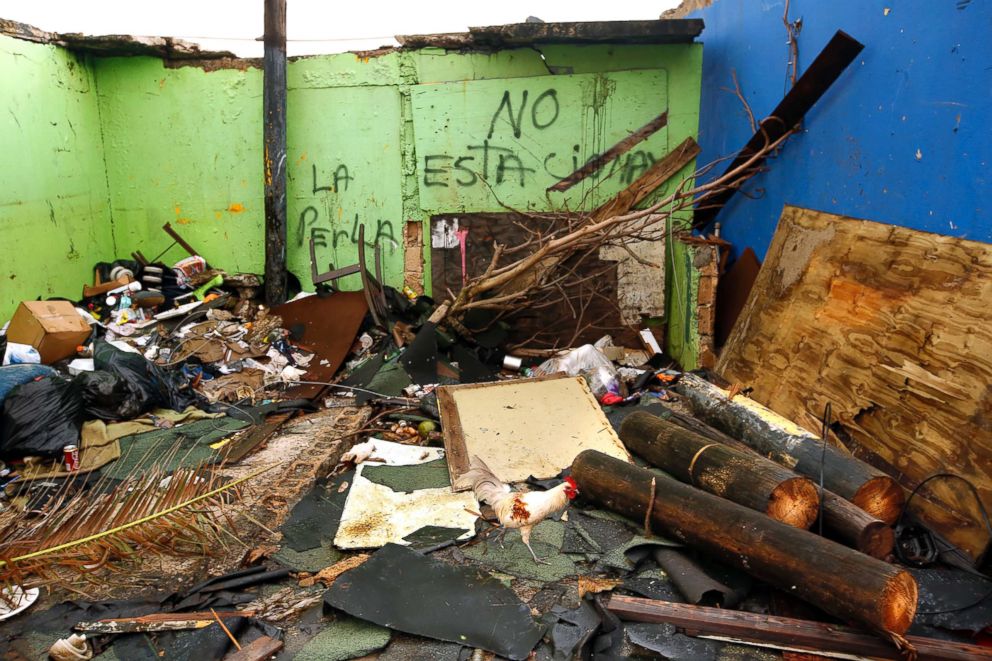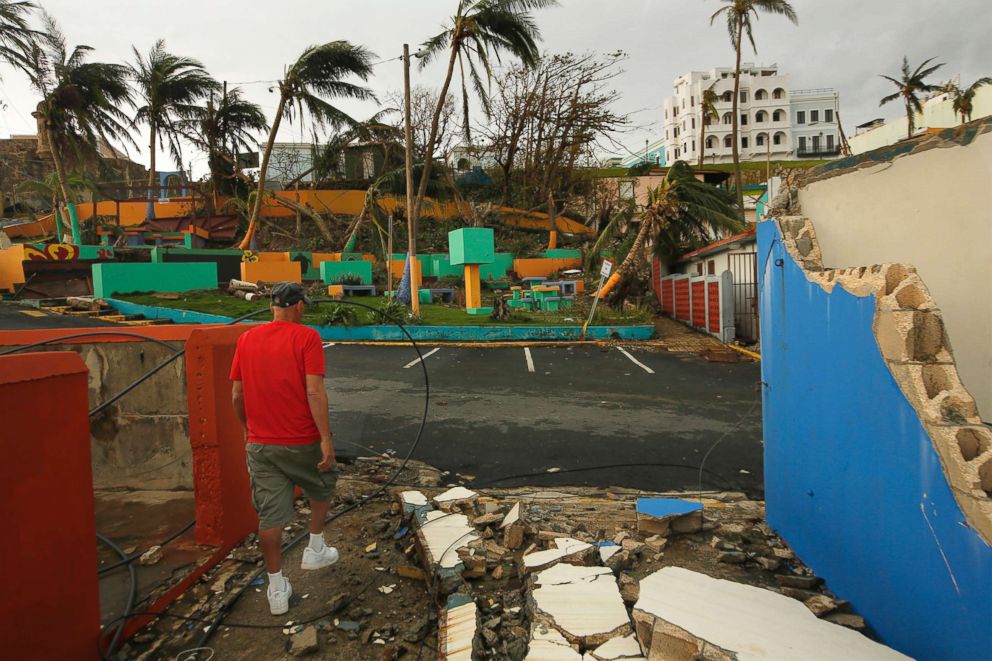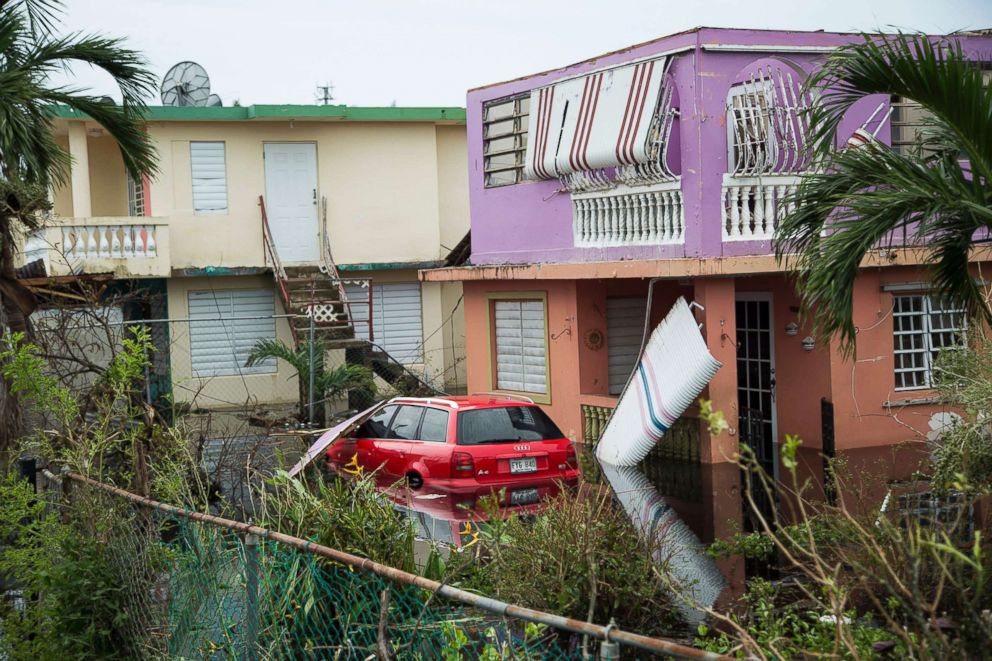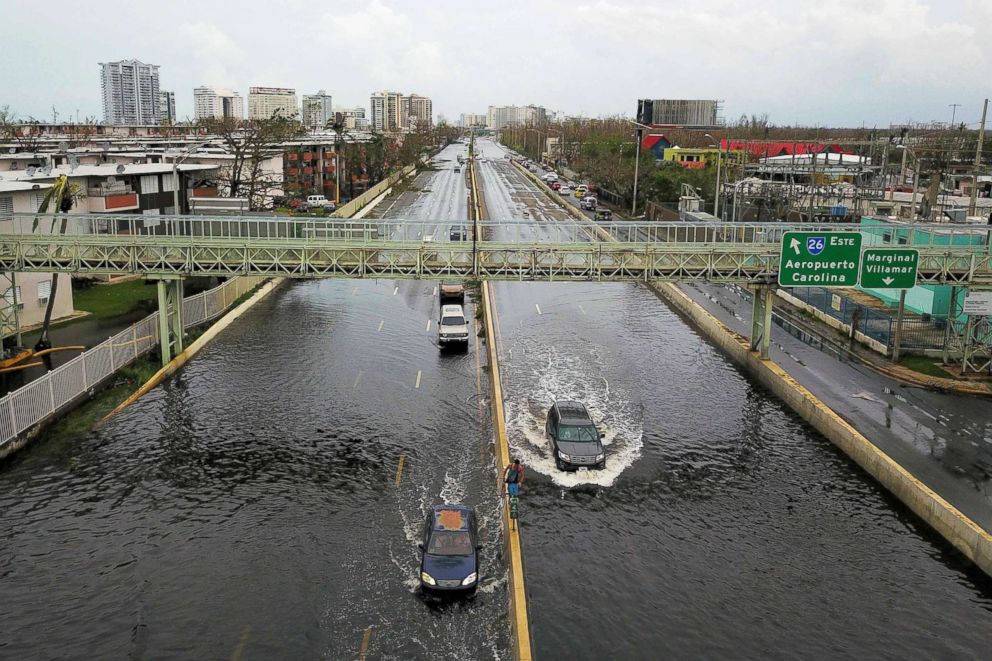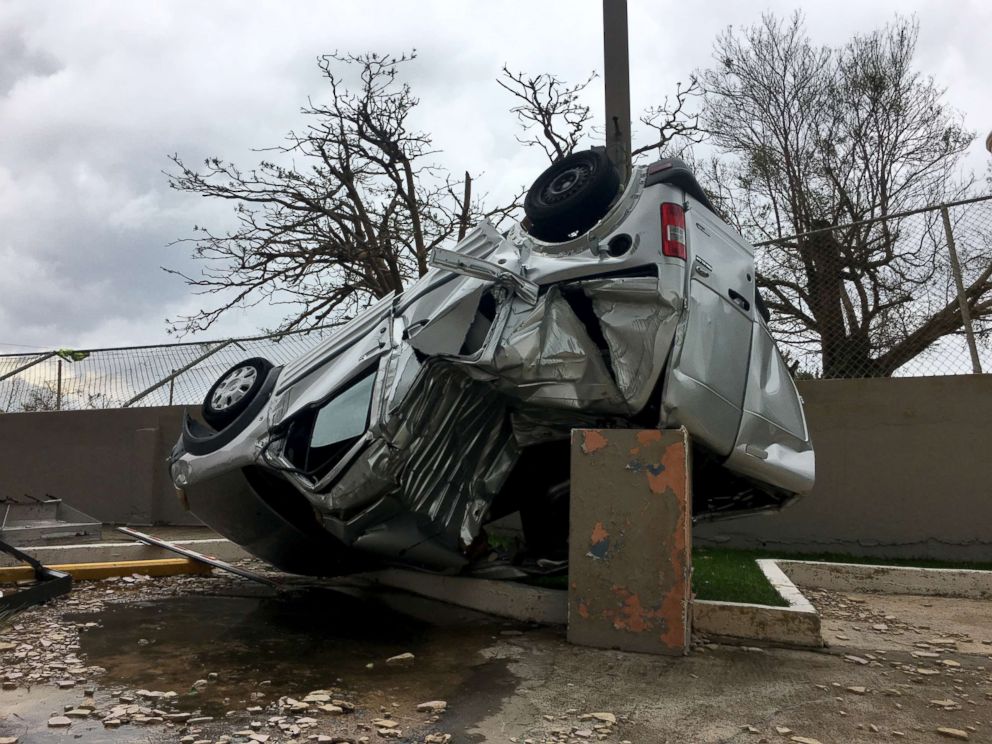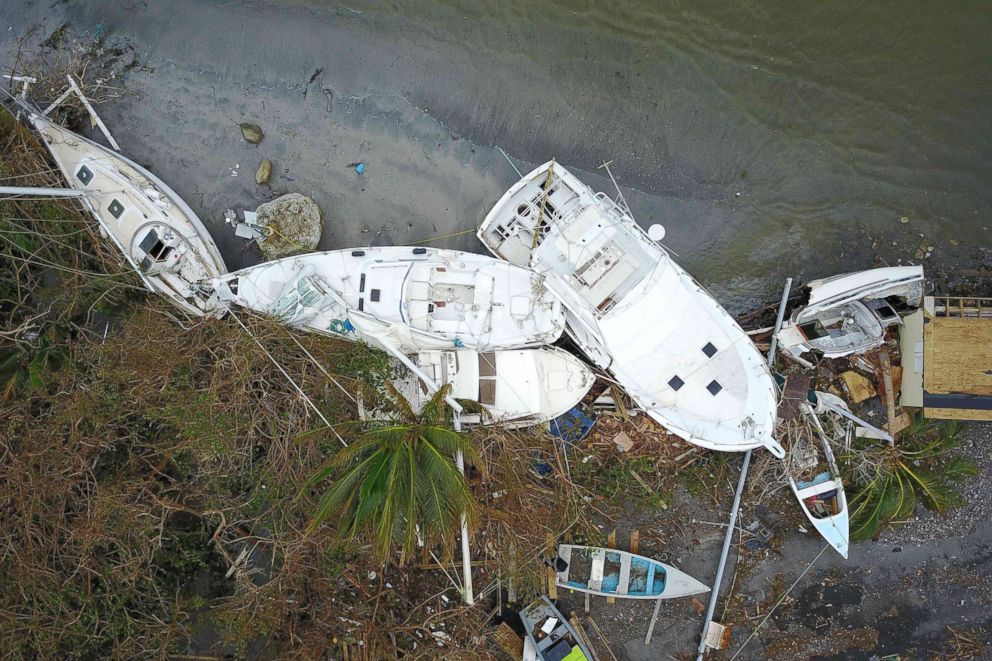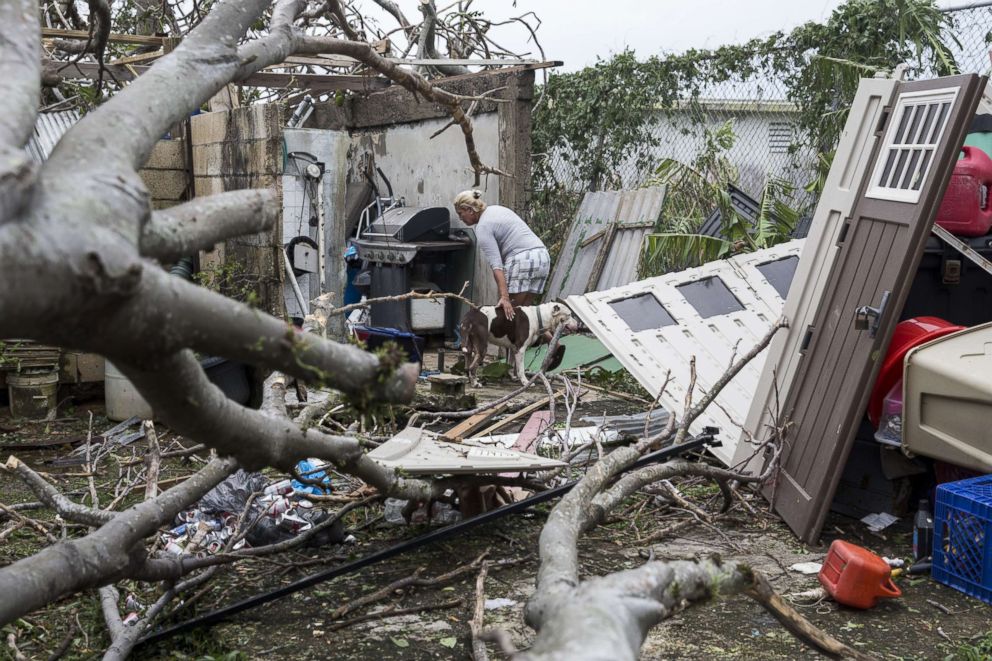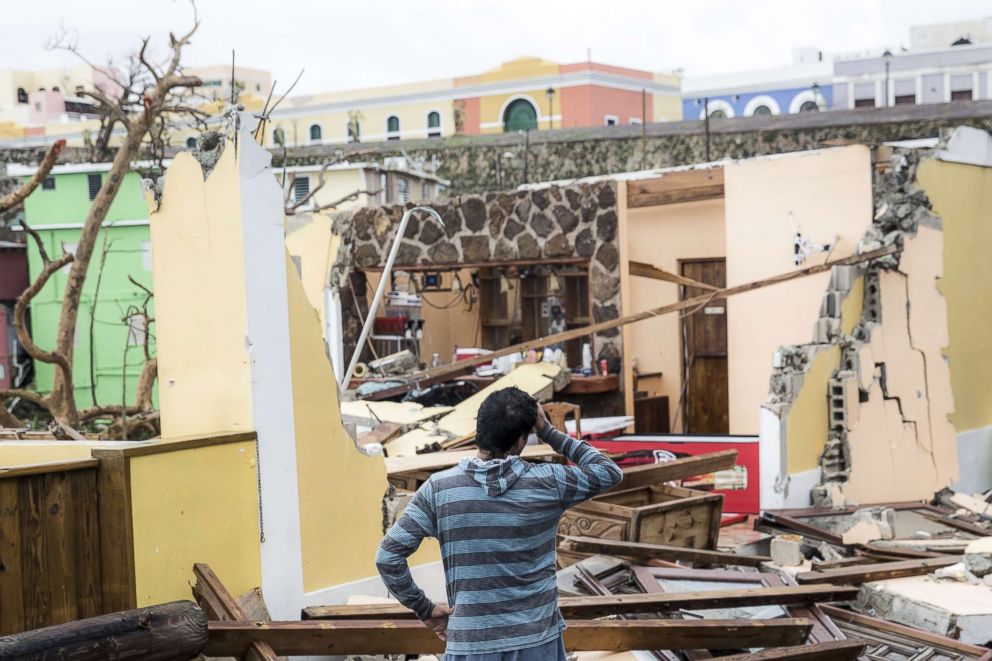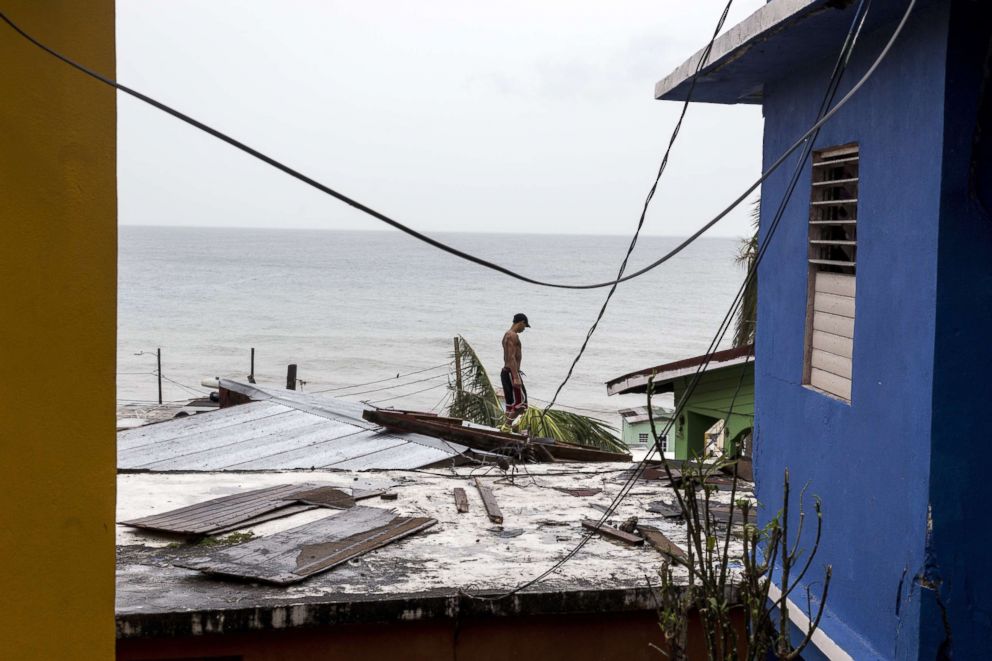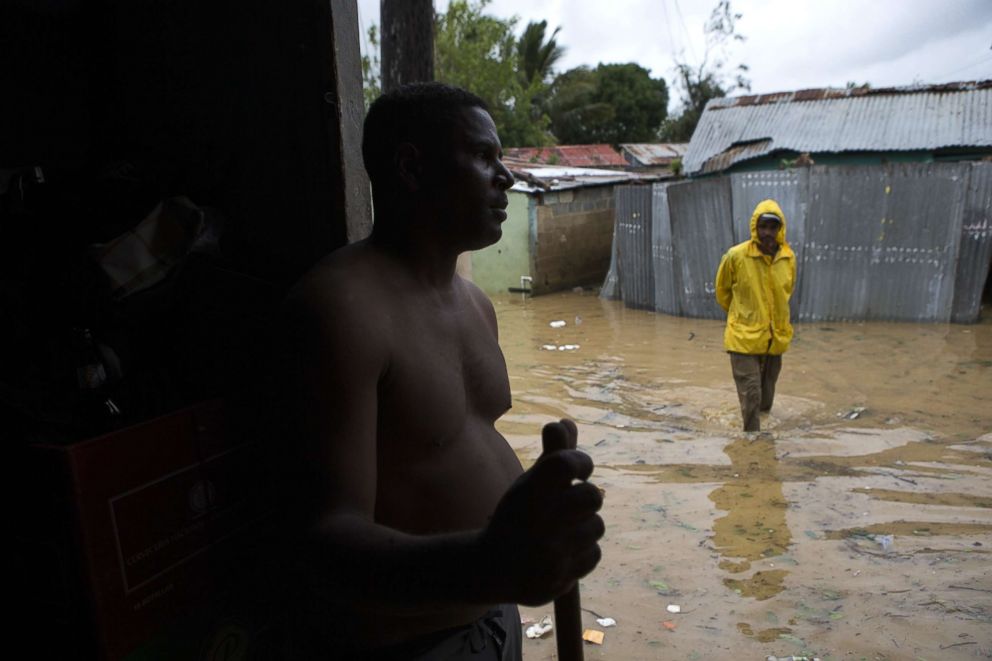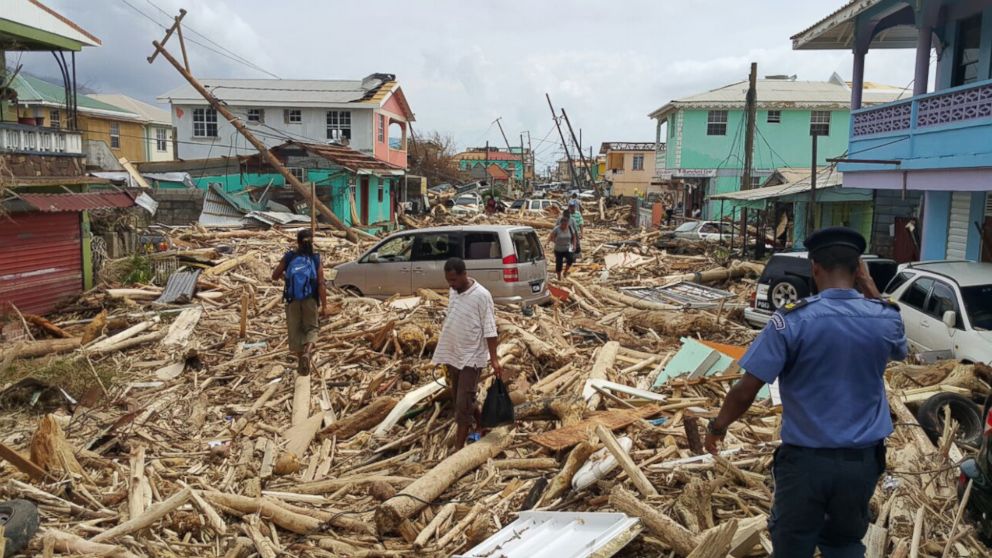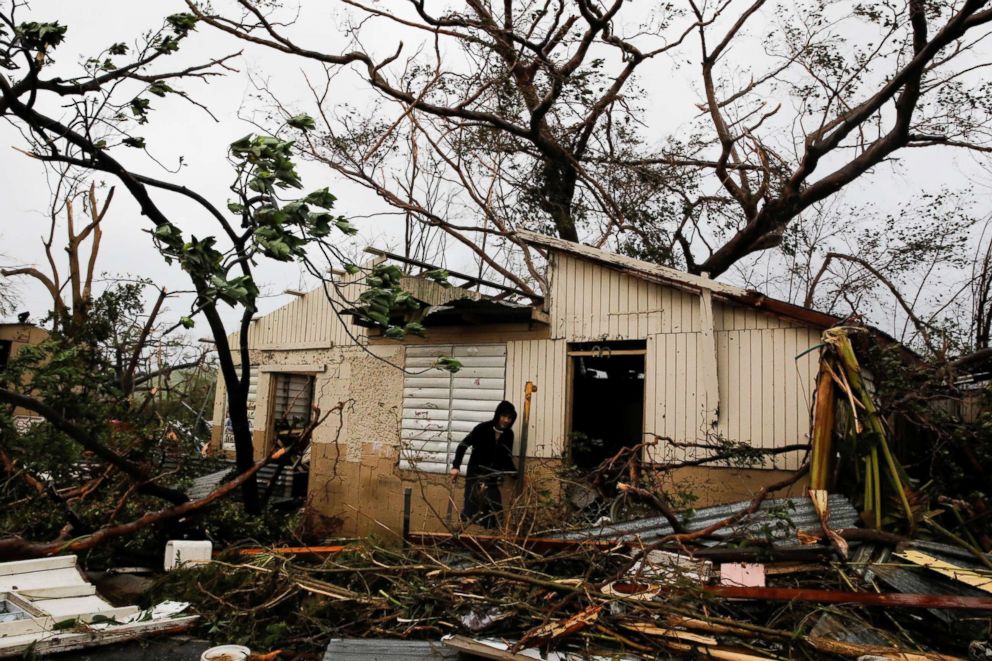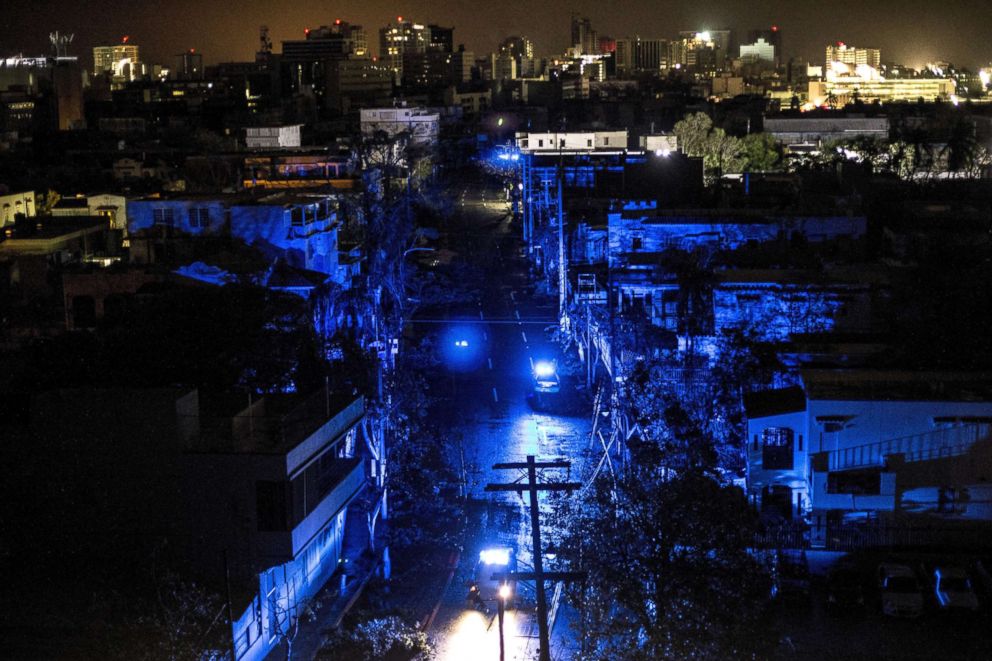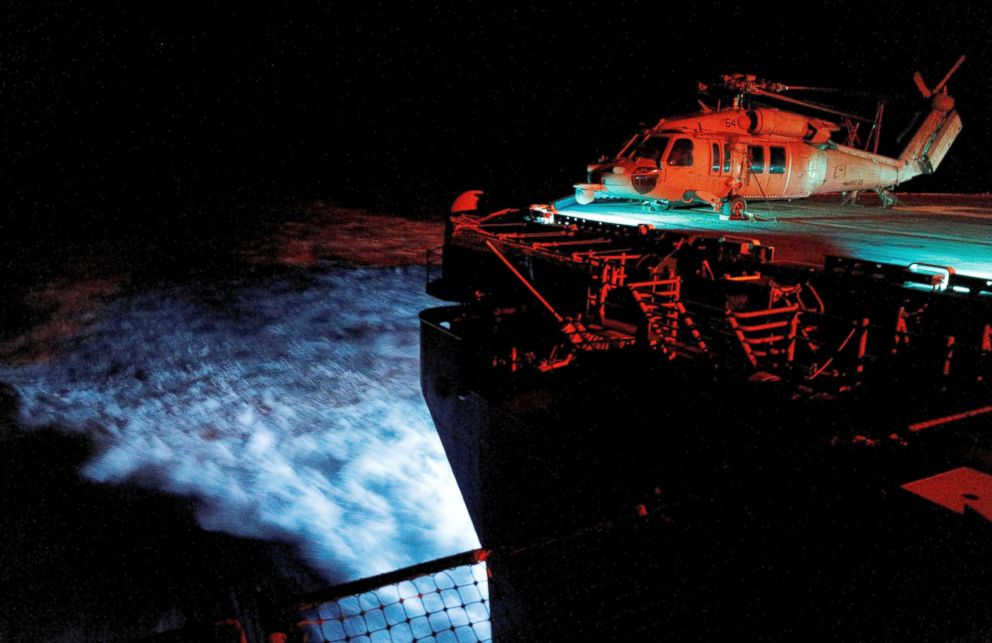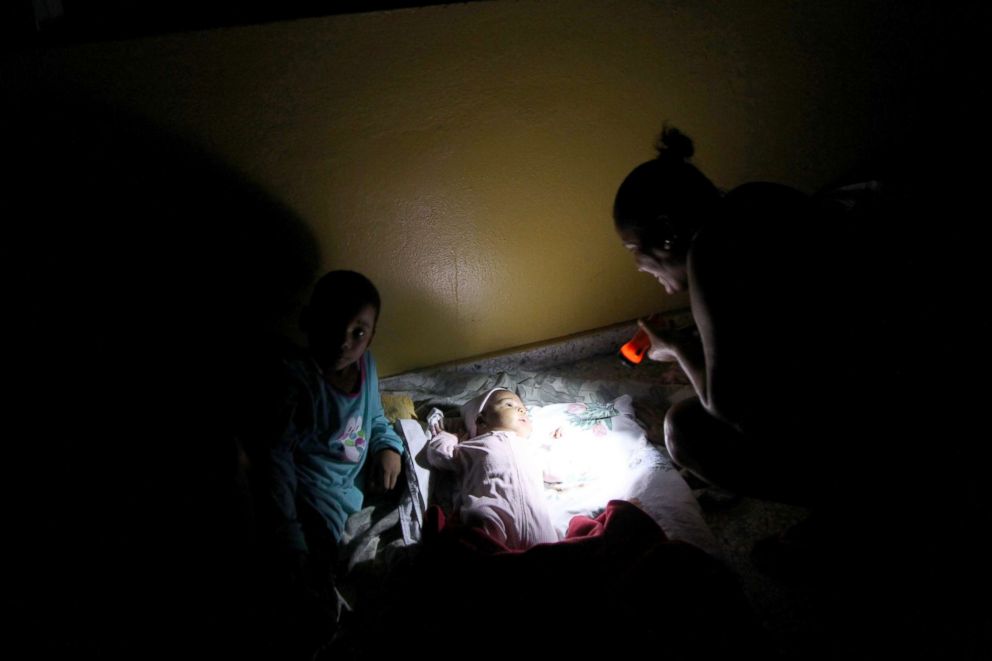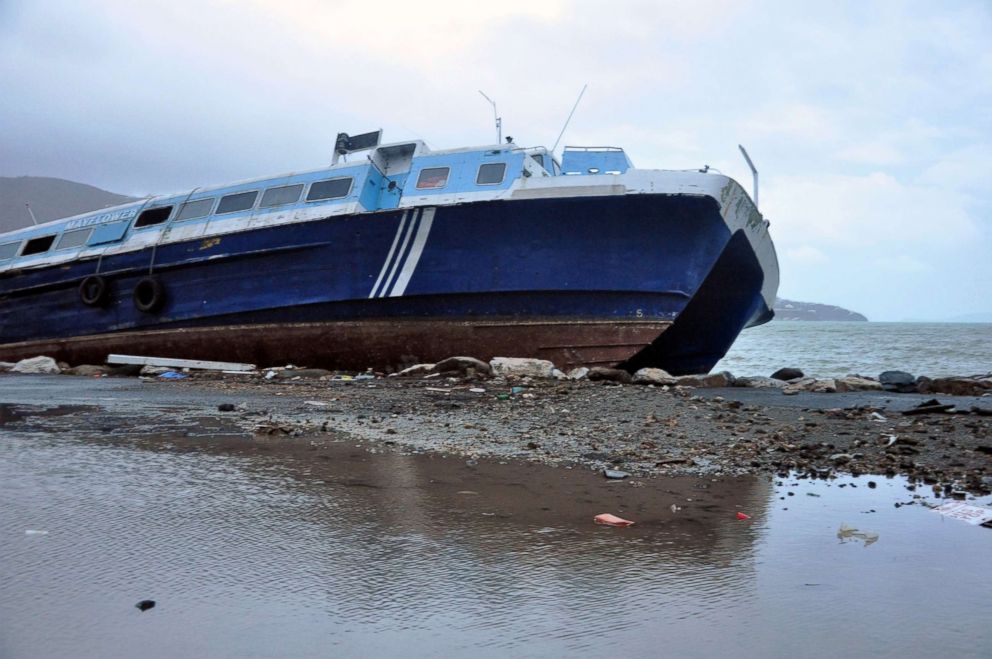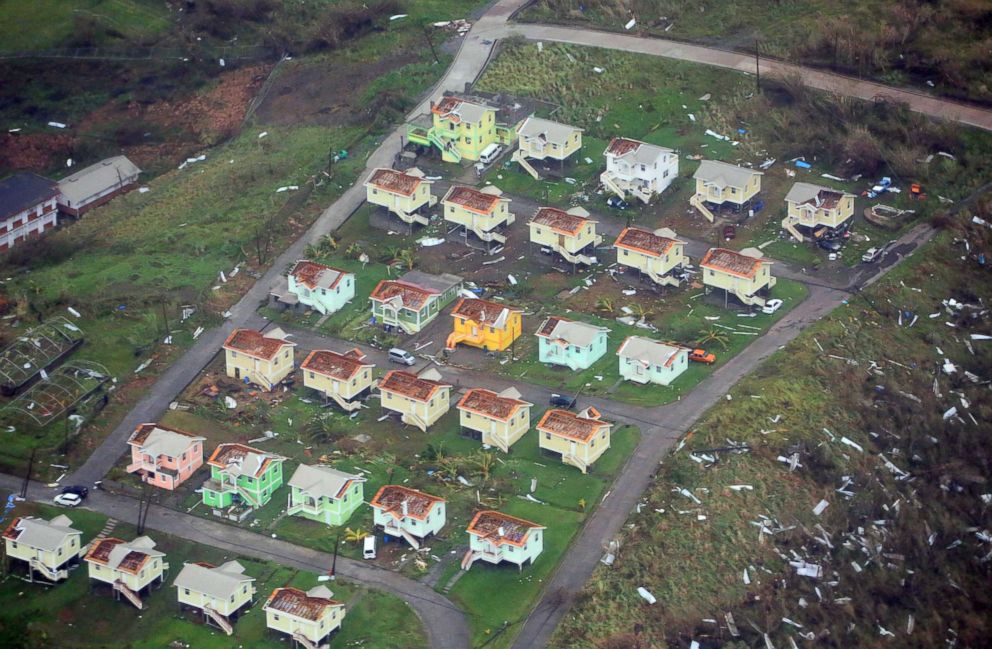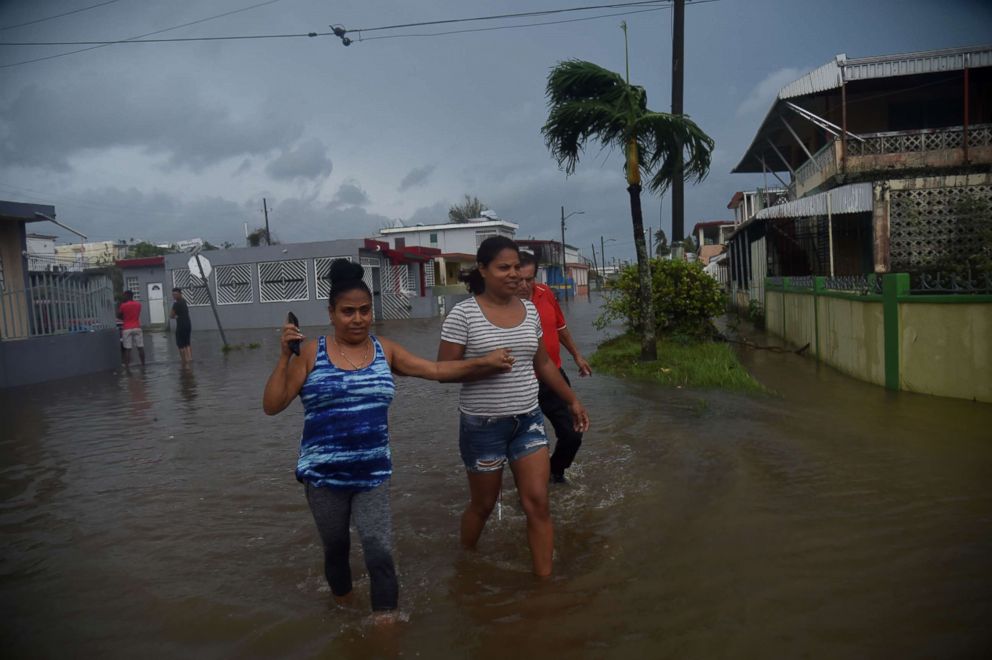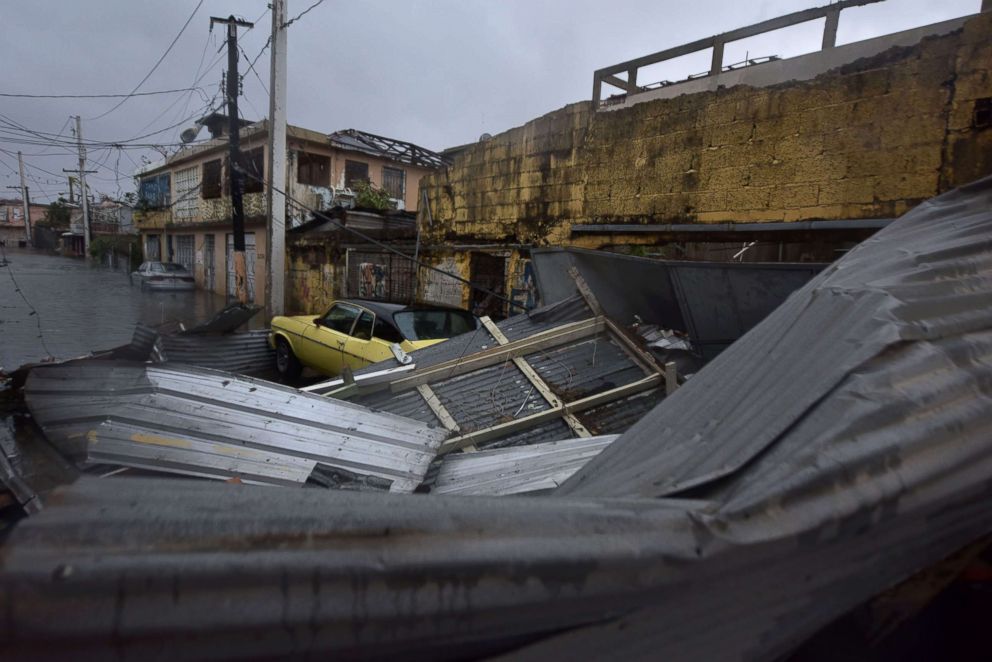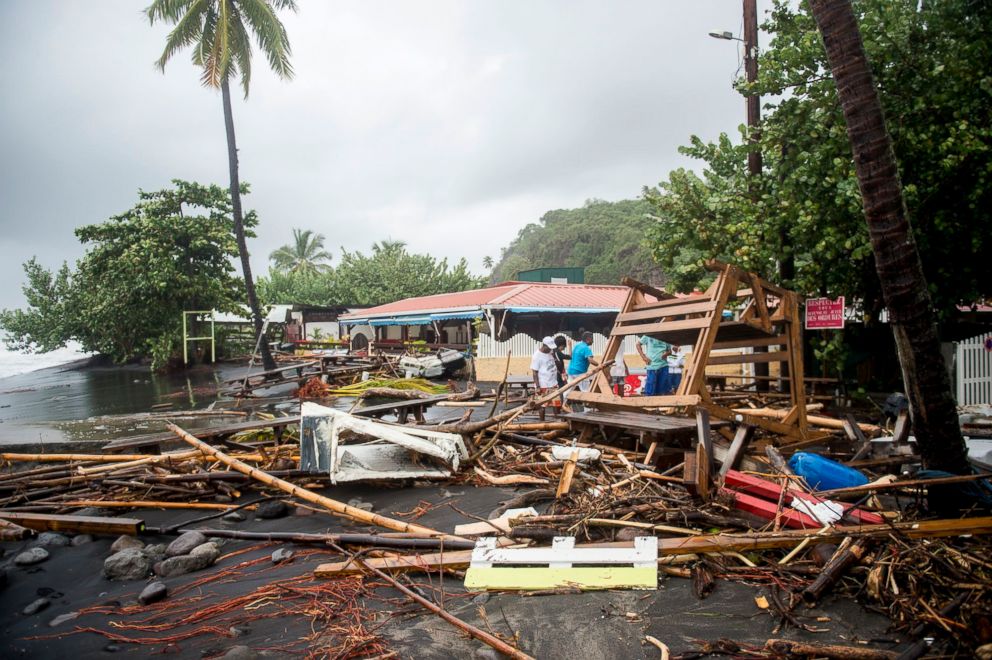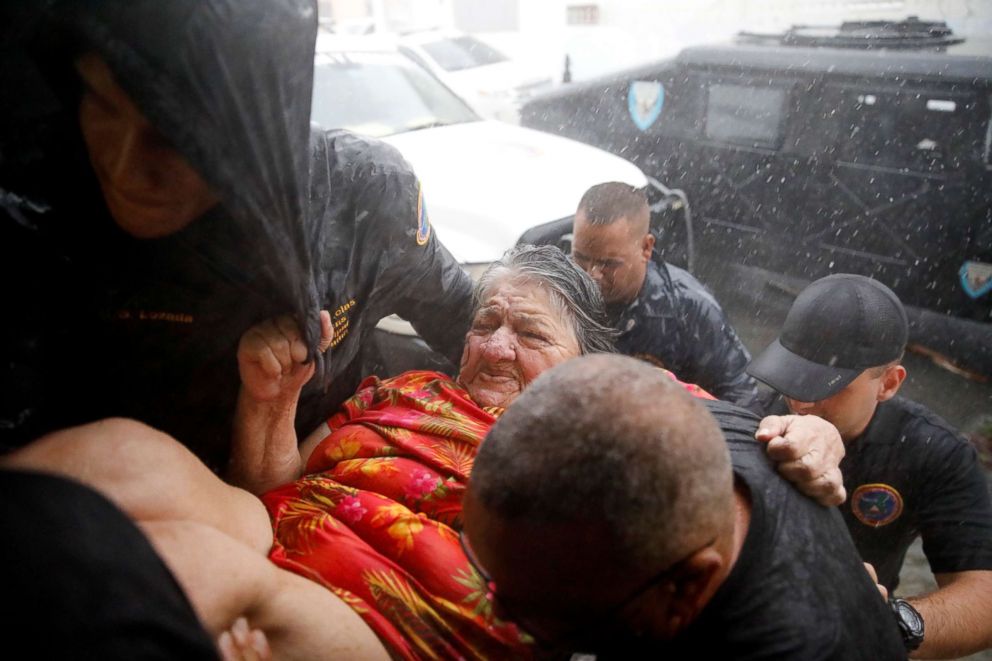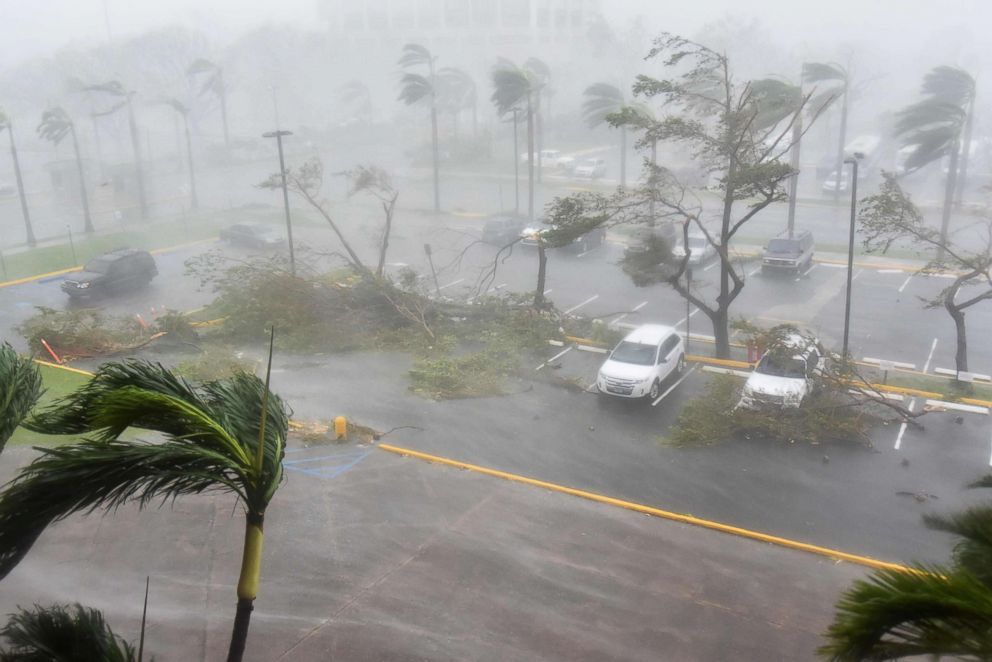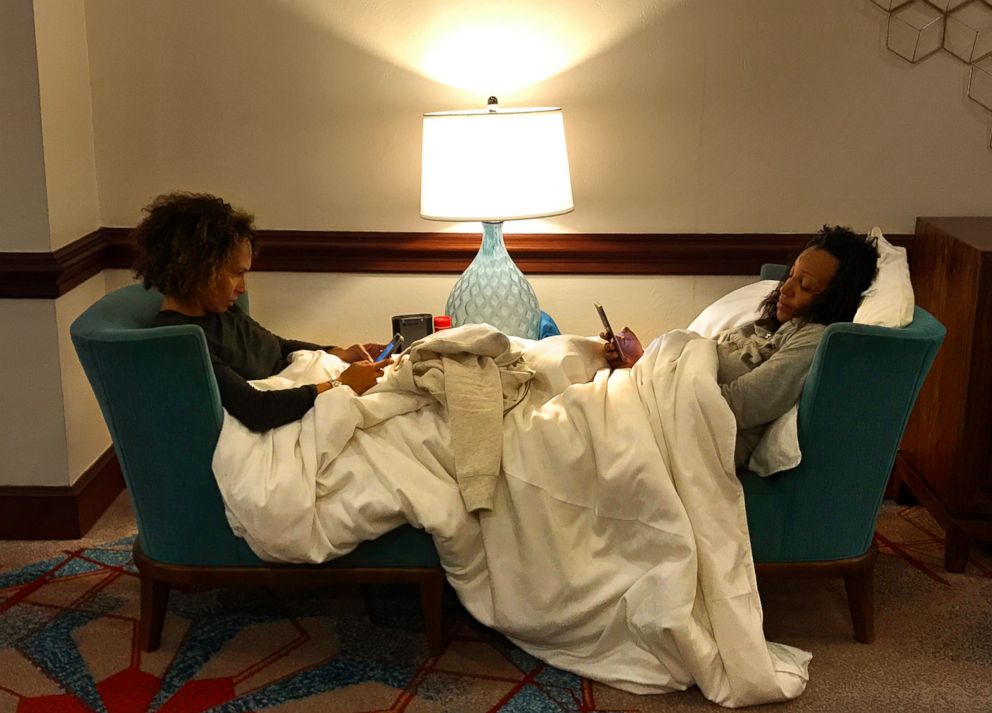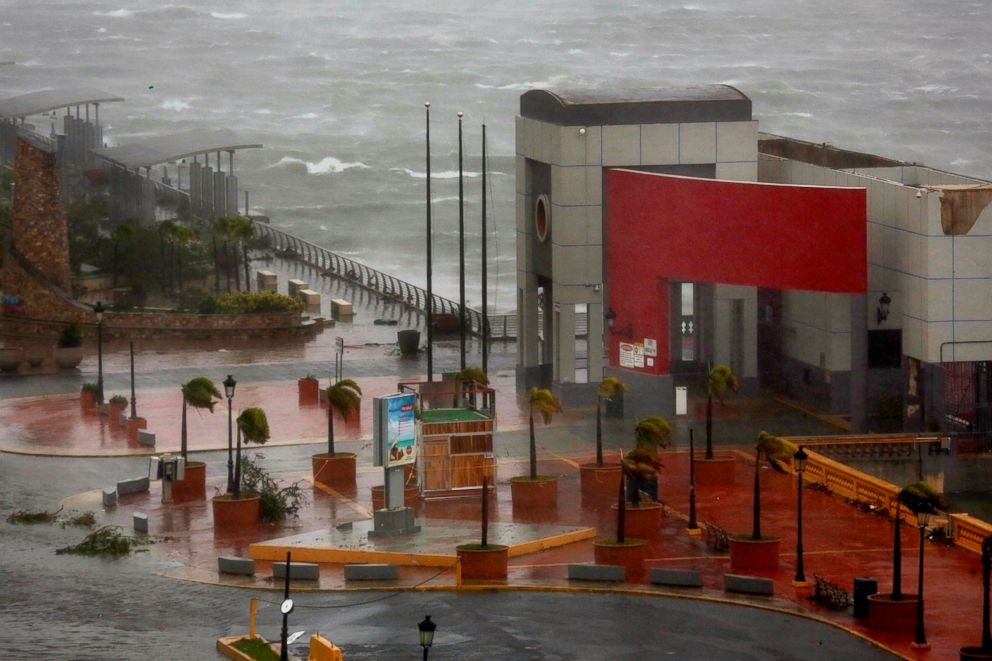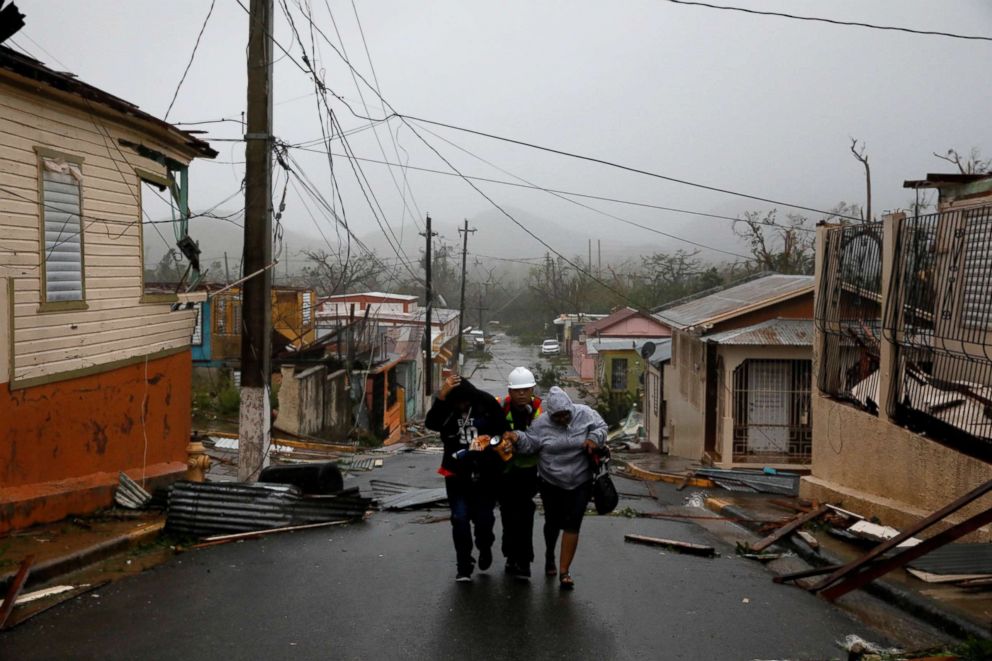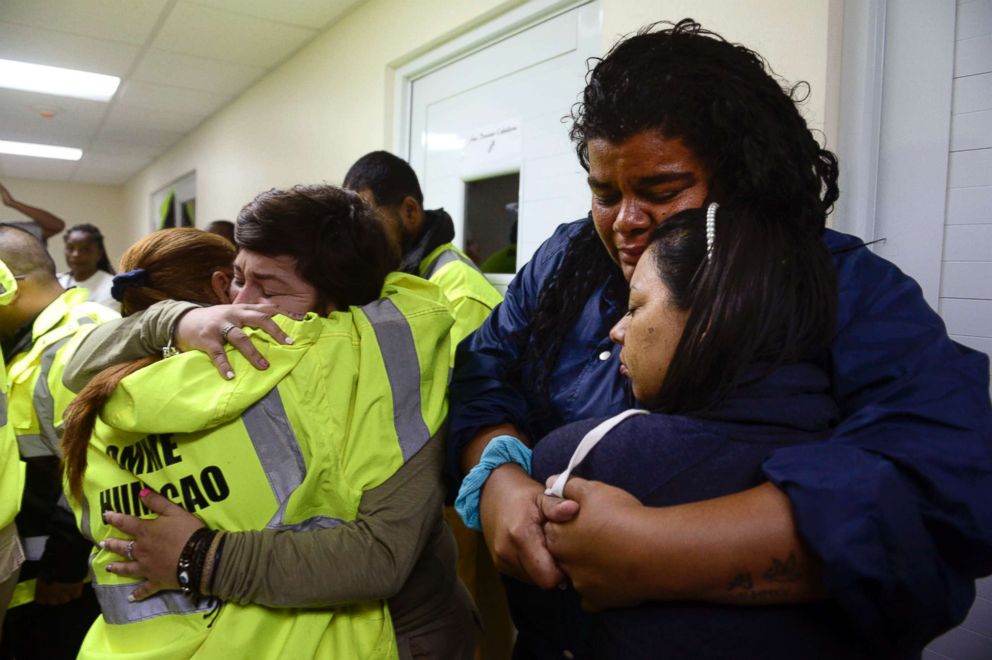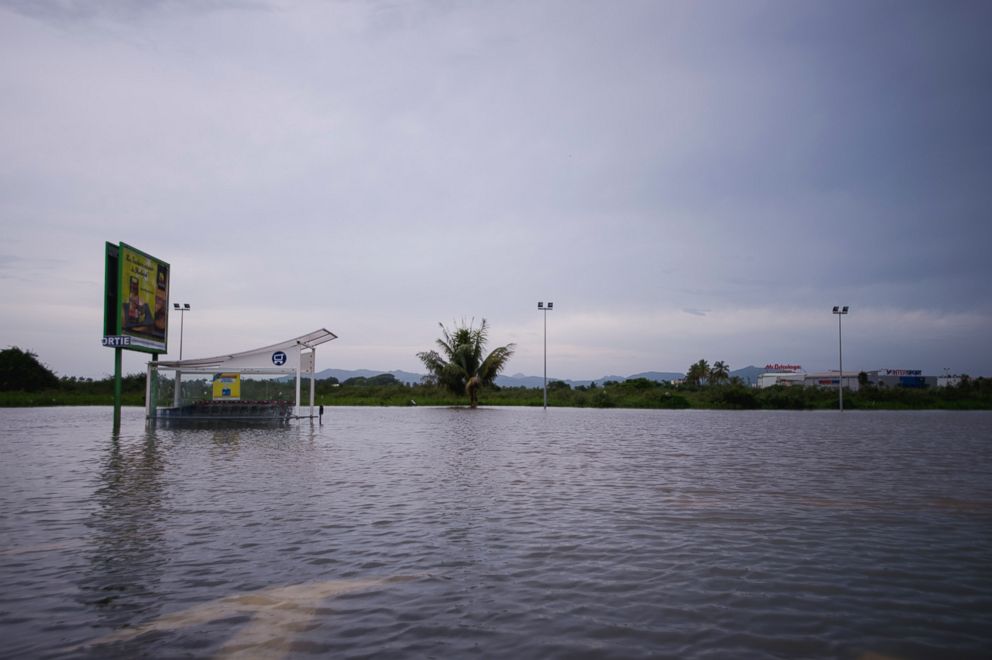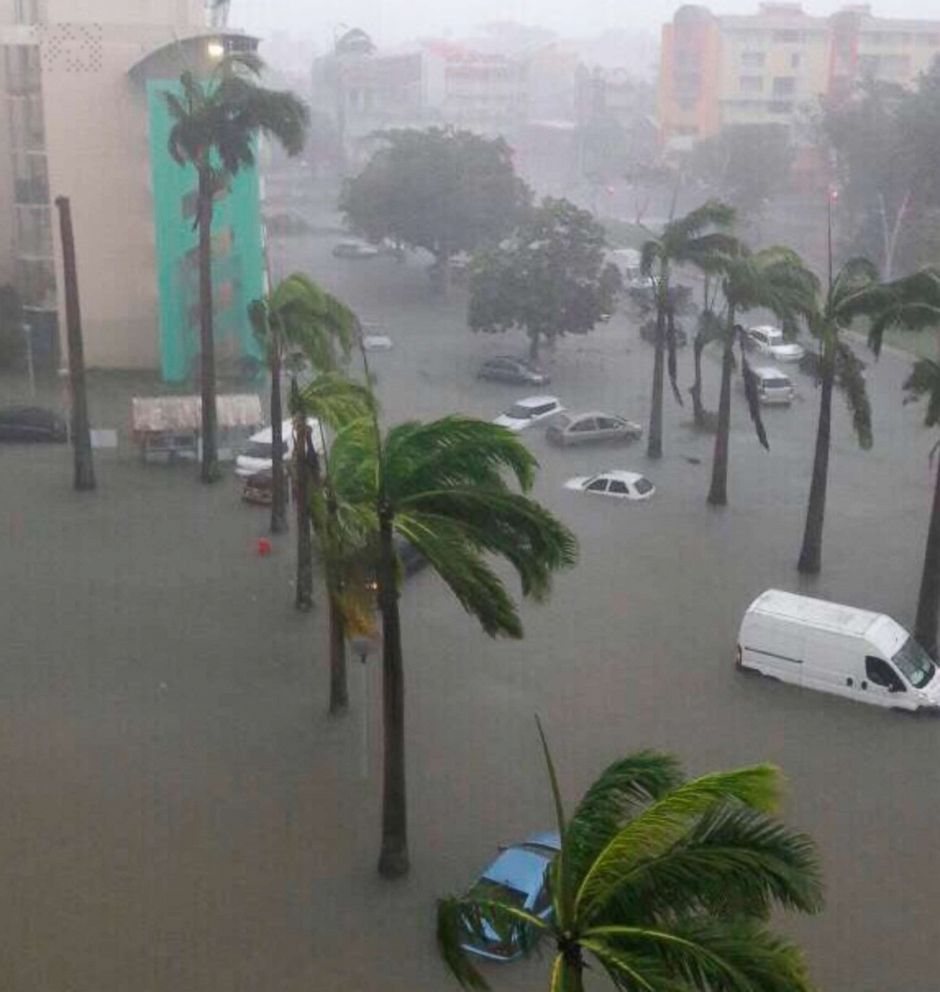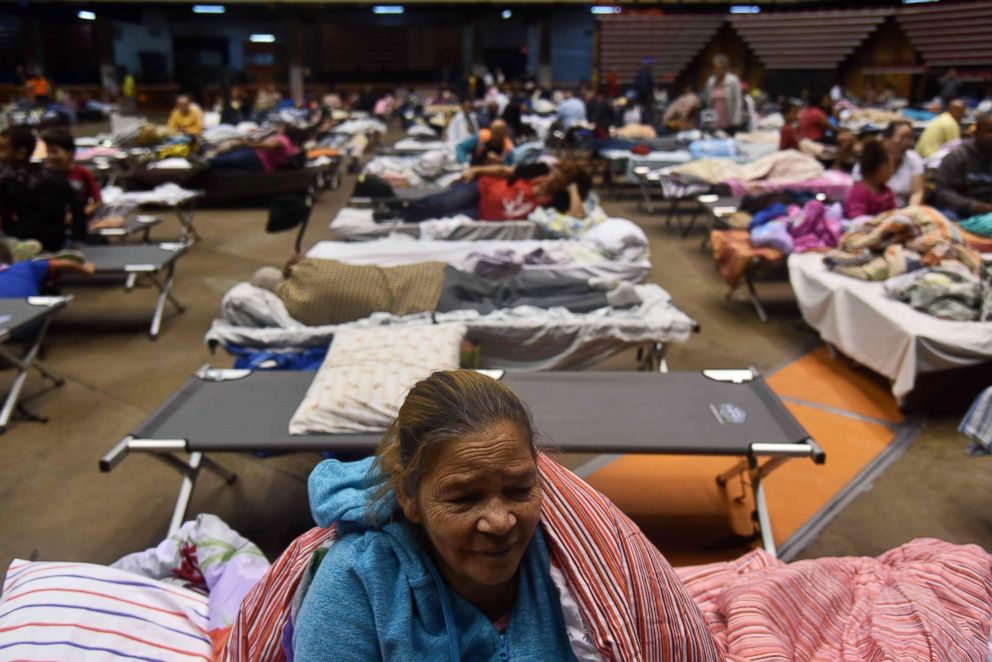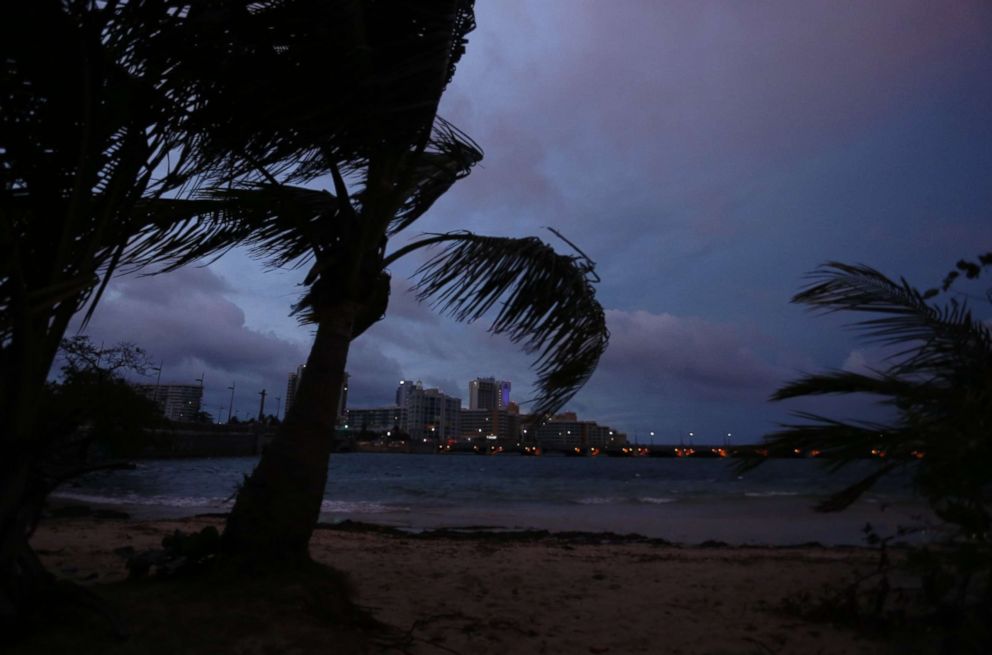In post-Maria Puerto Rico, an infant copes with shelter life
Just weeks old when Maria made landfall, he sleeps in a shelter with his family.
— -- Keyden is just 31 days old, but he's already experienced tragic hardship.
Having been born just days before Hurricane Irma passed over his birth island of Puerto Rico and weeks before Hurricane Maria slammed into the U.S. territory as a Category 4 storm, Keyden is now living in a shelter.
Home is now a classroom at Escuela Felix Seijo Rivera in Utuado, an inland town on the island. Keyden's grandmother told ABC News that they moved to the shelter after Hurricane Maria devastated their town. Keyden appears to have dermatitis, an uncomfortable skin condition that commonly afflicts babies-- but he has not been treated yet.
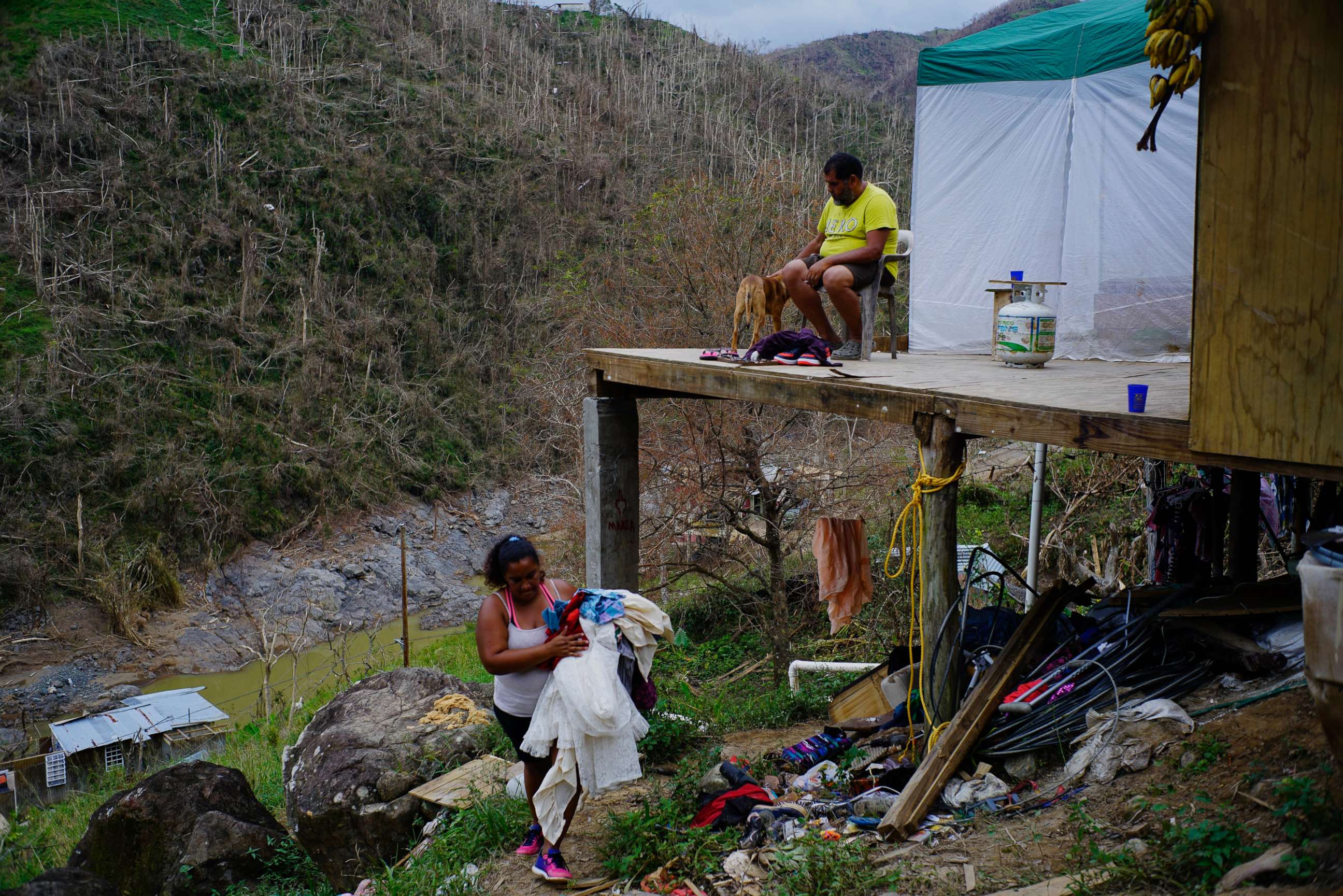
The family has no word on the condition of their home -- though they don’t believe it’s still standing.
In the wake of its destruction, Puerto Rico Gov. Ricardo Rossello said Maria was "probably the single biggest hurricane catastrophe in the history of the U.S.”
The people of the mountainous town of Utuado, located about two hours southwest from San Juan, are making do with what they have and what they get. There is a tension among those in shelters that not enough is being done or distributed.
Inside the school shelter, 65 people spend their day playing cards while they wait for the sun to warm up bathing water. Of the 65, 25 are children, and a woman who is 7 months pregnant.
Along the way to Utuado, people are huddled along the side of the road.
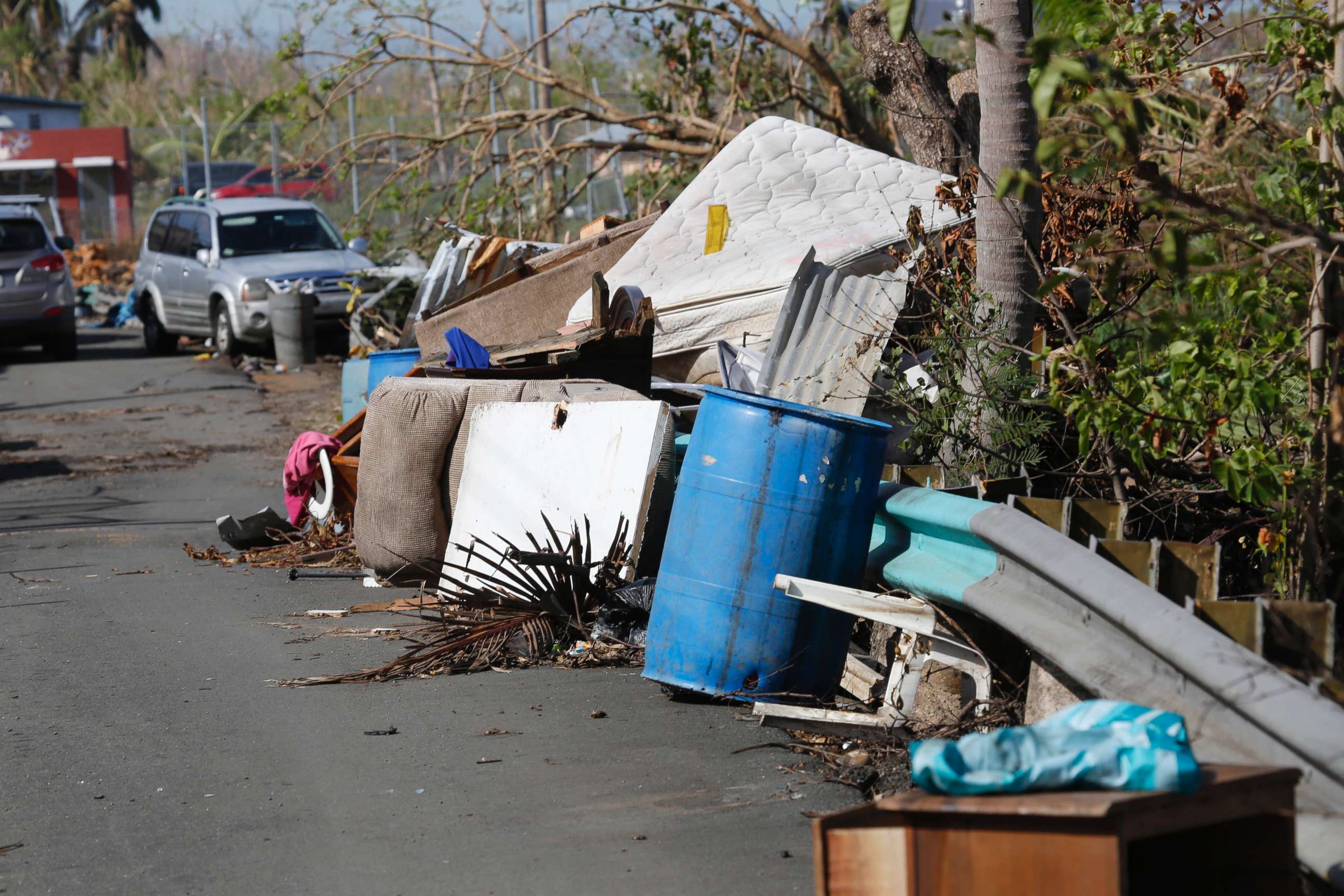
Water coming down from the rainforest has reached people through a series of PVC pipes held together with rags. Some people drink the same water they bathe in, filling up buckets loaded on the backs of trucks.
Mariana Cruz washed clothes with her mother, Manuela Moya. When Maria hit, her mother had to be rescued by the National Guard because their Alta Bajo home was cut off from a bridge that was washed away, she told ABC News.
This bridge, which put Moya’s life in danger, gives a sense of the danger Hurricane Maria created. Upended roads lead to the remnants of mudslides and a portion of the bridge is still sticking out, whilea make-shift ladder allows people to travel between the mountain neighborhoods and the town center.
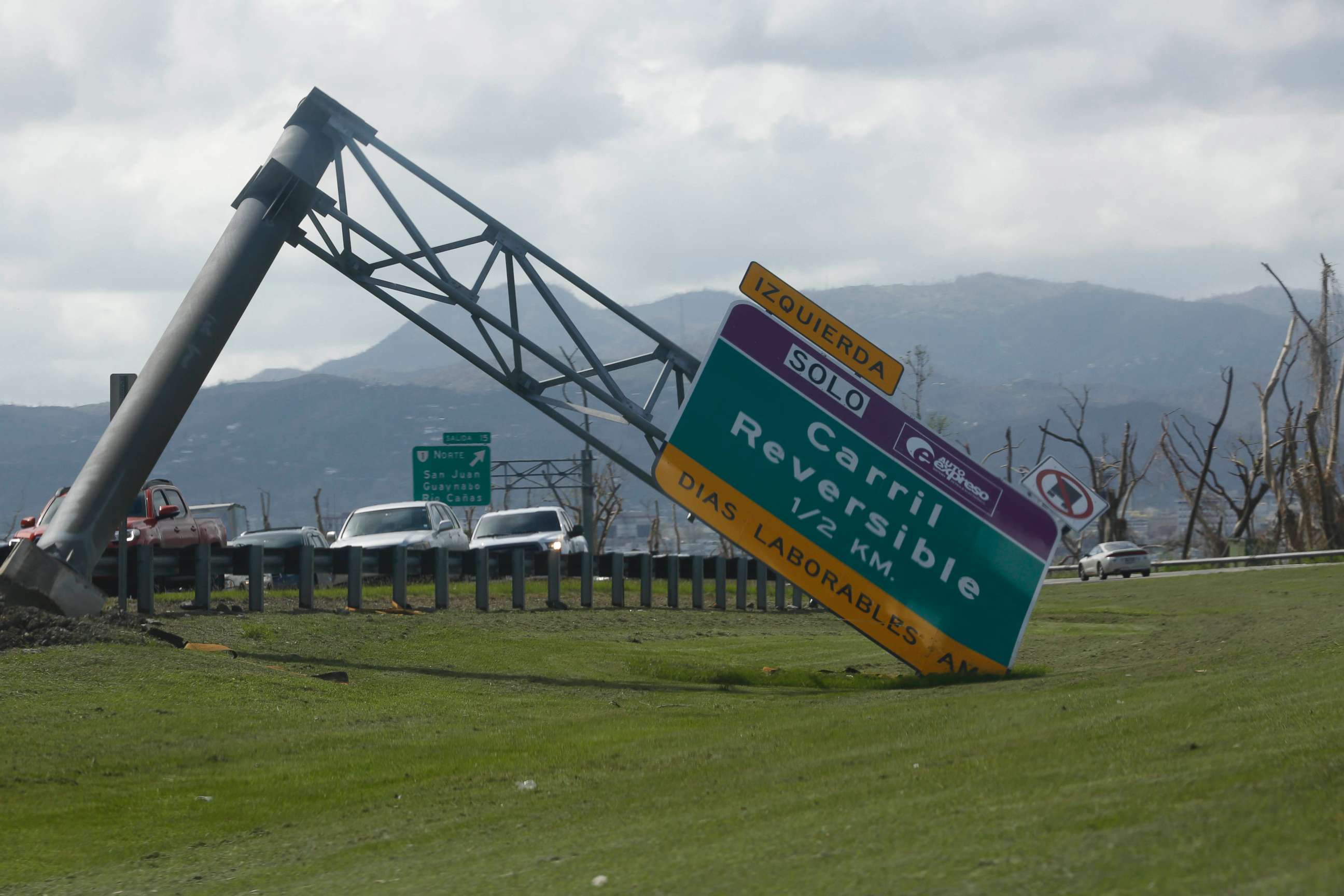
As a man with a rope hoists buckets of dirty water, further downstream, a graveyard of building facades, cars and homes remain partially submerged in layers of mud.
Hurricane Maria pummels Puerto Rico, Caribbean
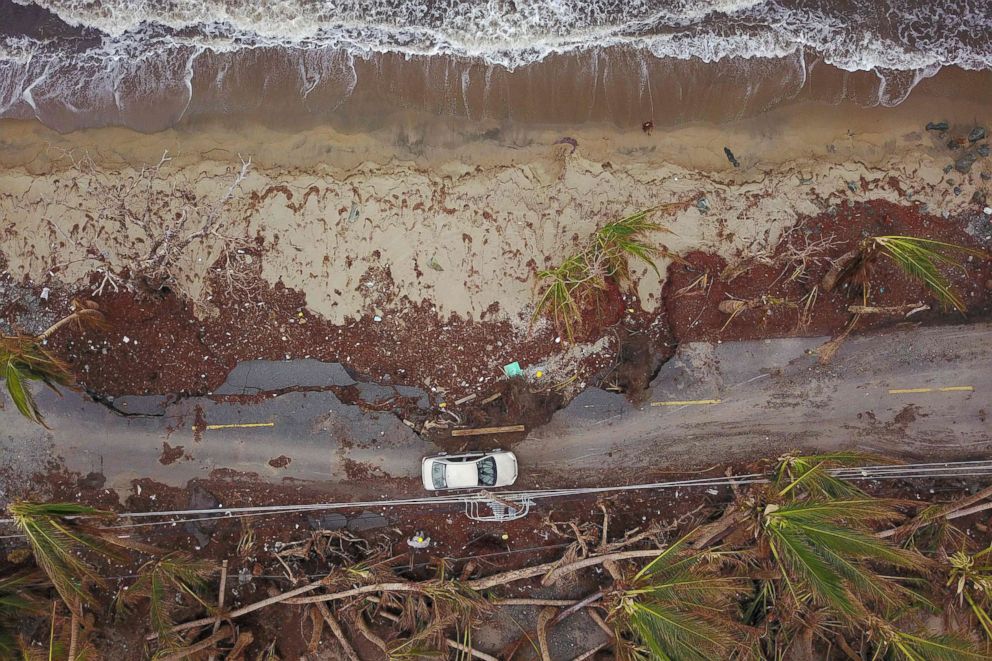
The streets of Utuado are deserted. The town square is now bathed in the sounds of chainsaws cutting wood. The doors at town hall are flanked with simple signage directing people to apply for FEMA assistance.
This town is considered lucky--it happens to be a larger town with a National Guard post, facilitating the arrival of aid. But local challenges persist. Some residents know that food and supplies are arriving to the island, but question who will delegate the supplies. Eventually, a town resident said, there will come a time when residents will not accept the lack of supplies in their hands anymore.
“We are living day by day. We don’t know what’s waiting tomorrow,” Cruz said.
